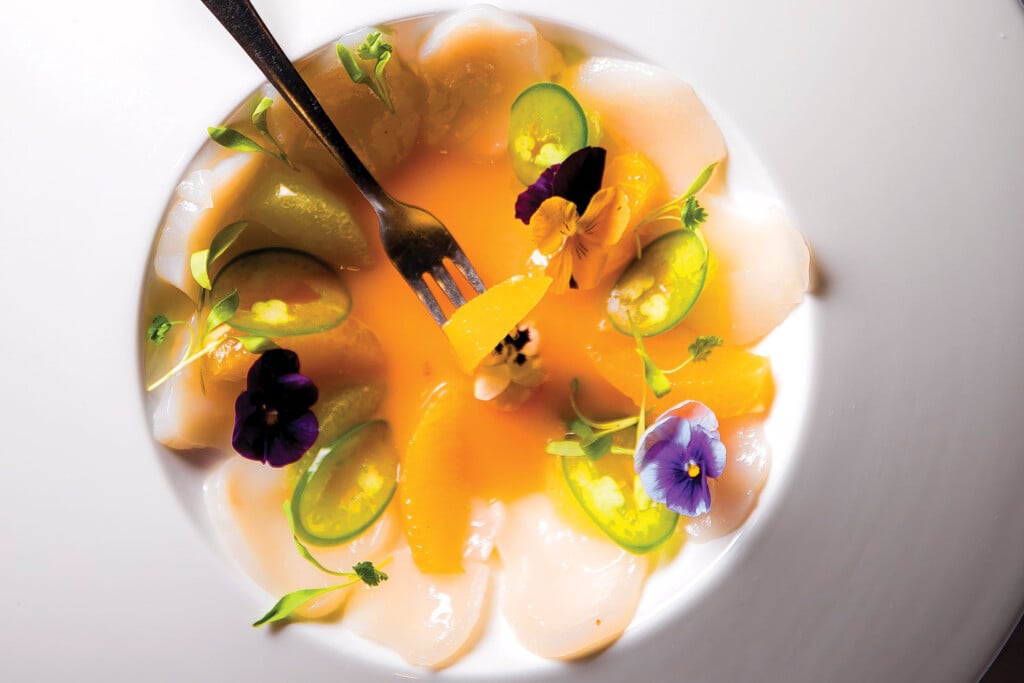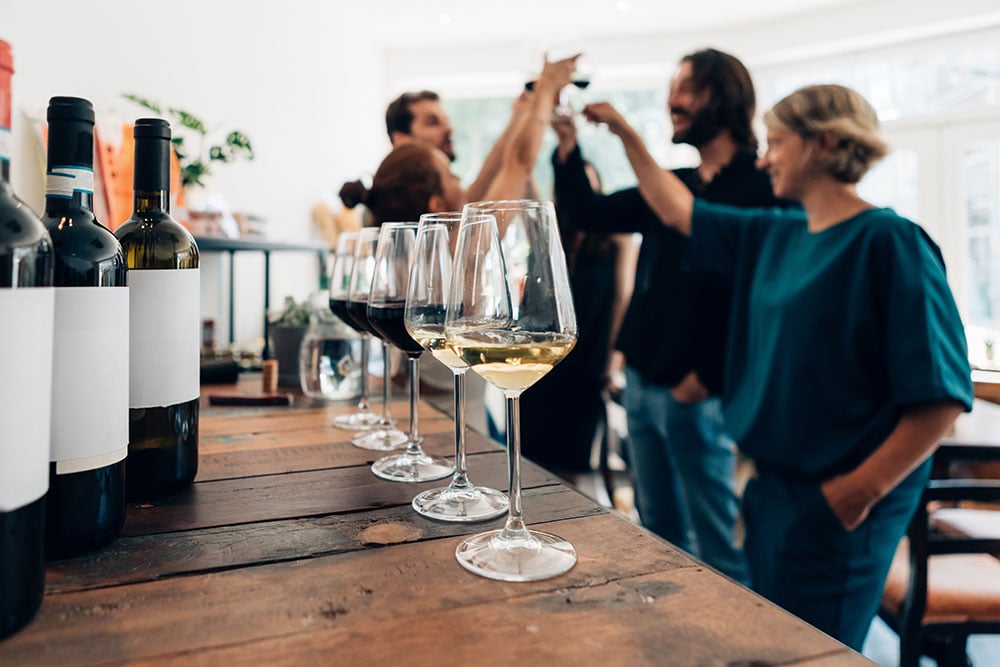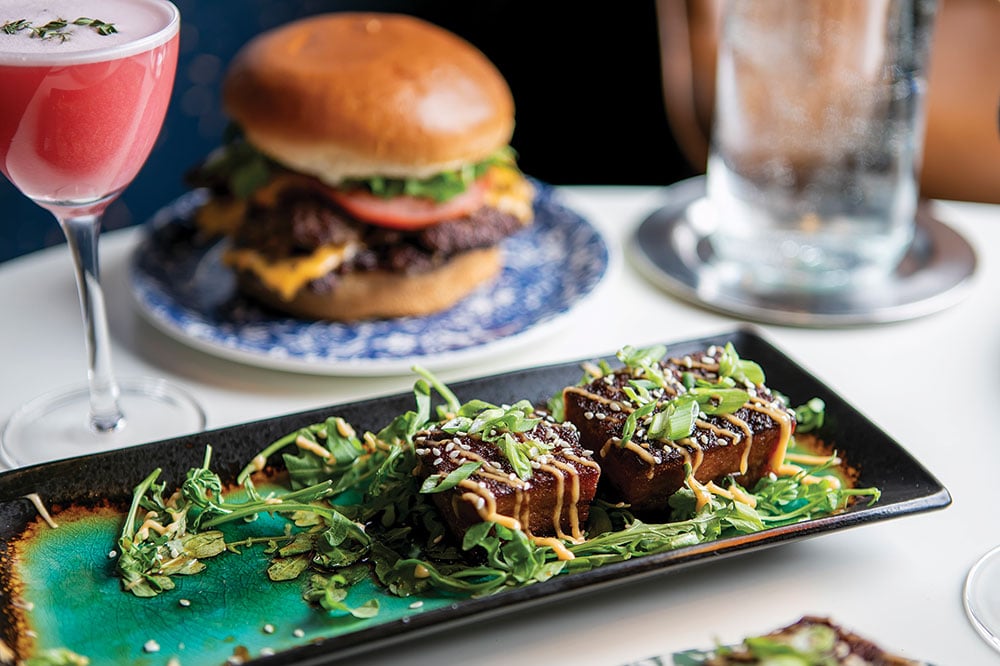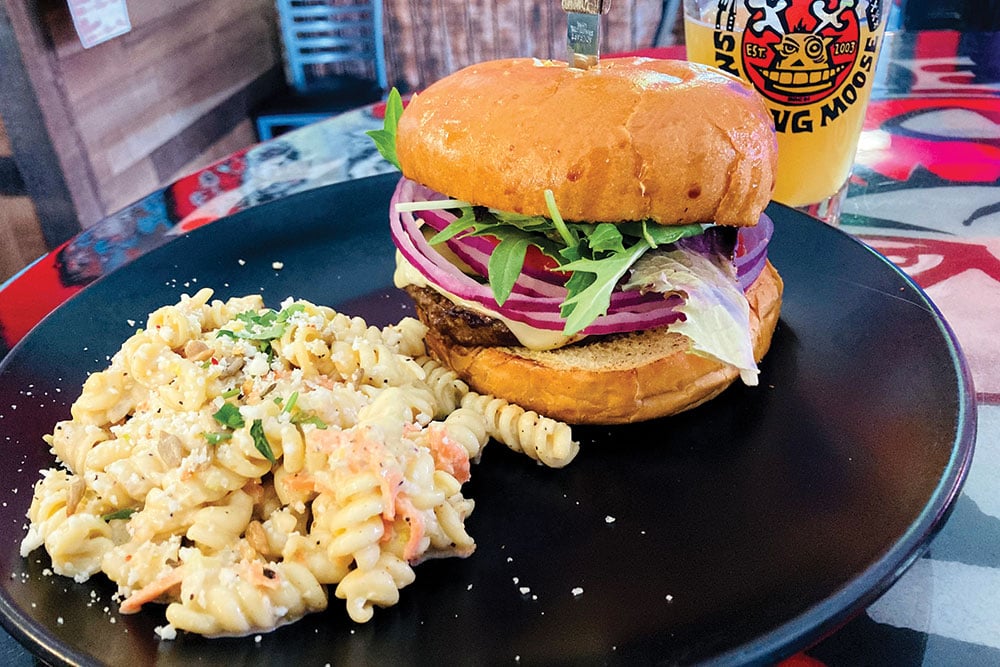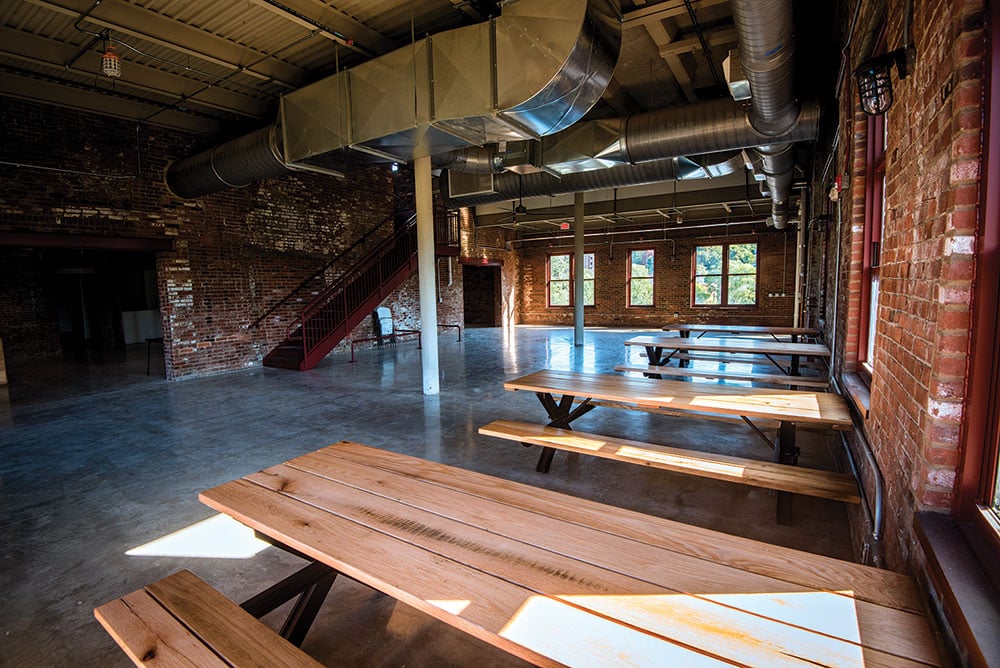The Fight to Survive for Pittsburgh Restaurants
The region’s restaurants and bars are doing all they can to survive a pandemic that has meant immeasurable sacrifice — and precious little government support in return.

“WE NEED TO BAND TOGETHER TO KEEP THE INDUSTRY AS A WHOLE SAFE. EVERYBODY IS IN A BAD SPOT WHERE THEY NEED MONEY, BUT PUTTING A BARTENDER IN A SITUATION WHERE THEY HAVE TO POLICE A DINING ROOM ISN’T OK. IT’S AN IMPOSSIBLE SITUATION TO THEM.” –– KATE ROMANE, OWNER OF BLACK RADISH KITCHEN
It’s been a terrible year for just about anyone who operates a restaurant, bar or catering business. Since March 16, when the first public health measures to mitigate the spread of COVID-19 included the prohibition of on-premises consumption, life in the region’s hospitality industry has been a roller coaster of uncertainty. While it’s true that restaurants and bars close every year and Pittsburgh hasn’t, to date, seen a tidal wave of COVID-related shutterings, tension about survival is high. Union Standard, Brillobox, Ace Hotel, The Original Hot Dog Shop, Mixtape, Spoon and Fairlane, among other beloved establishments, are gone for good. The rest of the industry is hanging by a thread.

“FROM THE DAY MY FATHER DIED, I’VE BEEN WORKING TO OVERCOME THINGS ALL MY LIFE. IF COVID HAS PROVEN ANYTHING, IT’S THAT I HAVE A GREAT ABILITY TO FIGURE THINGS OUT. NOW I KNOW EVEN A PANDEMIC ISN’T GOING TO STOP ME.” –– JACKIE PAGE, OWNER OF LOVE ROCKS CAFE
‘The fact that every state, every county, every city, had to go through this individually, without any unified federal leadership, was a big problem. Our anti-Federalism led to every single place having to spend resources and time trying to figure it out on their own,” says Bill Fuller, president and corporate chef of big Burrito Restaurant Group.
Yet in the face of suffering and uncertainty, the people who operate businesses in the region’s hospitality industry have continued to adapt through creativity, community support and sheer force of will.
“From the day my father died, I’ve been working to overcome things all my life. If COVID has proven anything, it’s that I have a great ability to figure things out. Now I know even a pandemic isn’t going to stop me,” says Jackie Page, owner of Love Rocks Cafe.
Kate Romane, owner of Black Radish Kitchen, was attending a catering convention in Las Vegas when word spread about the novel coronavirus’s impending threat. She’d lost $45,000 of projected business by the time she returned to Pittsburgh a few days later.
Romane had to lay off her entire staff: 10 full-time and 50 part-time workers. She and her director of events and development, Sarah Tafel, brainstormed what to do next. “We lost the product that we sell. We promote people coming together. Food is our vehicle for everyone to have an easy time doing that,” she says.
She quickly developed some action ideas to staunch the financial void, such as launching a weekly meal delivery subscription. “It wasn’t clear at the beginning how extensive this would be,” she says.
It’s clear now that it would be pervasive — 10 months and counting. And that series of challenges to keep afloat would get more daunting as time went on.
“How do you know if you’re going to do enough volume to pay for product and pay the people that work for you?” says Fuller.

“THE FACT THAT EVERY STATE, EVERY COUNTY, EVERY CITY, HAD TO GO THROUGH THIS INDIVIDUALLY, WITHOUT ANY UNIFIED FEDERAL LEADERSHIP, WAS A BIG PROBLEM.” –– BILL FULLER, PRESIDENT AND CORPORATE CHEF, BIG BURRITO RESTAURANT GROUP
Muddle Through Uncertainty
Aside from a splinter group of politically motivated, short-term-thinking and science-denying restaurant owners, most people who run local hospitality businesses believe the Commonwealth’s public health measures, as restrictive as they are at times, are necessary. However, they wished they were included in the conversation about what was happening. The changes often came rapidly and without any additional guidance or assistance, the result was an overabundance of already-paid-for perishable food and the anguish of having to abruptly lay off staff.
“We expect these things to happen. But, as business owners, we don’t get edicts until 24 to 48 hours before they go into effect,” says Meredith Meyer Grelli, co-owner of Wigle Whiskey and Threadbare Cider and Mead. “We’re in crisis management mode. Having a four-week plan would be helpful. What’s less helpful to us is to have these advisories go out to people’s cell phones telling us not to leave the house but then also telling us that we are open at 50 percent. How do you tell people they can come in when they’re also getting messages on their phones saying don’t you dare go out?”
The fact that these changes were coupled without any significant financial support from government institutions makes things worse. The Paycheck Protection Program wasn’t structured in a way that would be helpful to most restaurants, and the money granted didn’t last long enough to sustain the businesses that were able to use it. The Restaurants Act, which would have helped significantly, was left to die in the 116th Congress. On top of that, the Commonwealth of Pennsylvania chose to use the money it received as part of the CARES Act to balance its budget rather than help businesses it asked to shut down to help prevent the spread of COVID-19.
“When I talk about, ‘They don’t care about restaurants and small businesses,’ it’s because, as rules were made to close them, there was never a concomitant allocation of funds to help. It was just like, ‘You’re closed. Good luck,’” says Fuller.
Other issues came to the forefront, as well. There was a need to educate diners on the etiquette of going out. While most of the public was generally willing to comply with public safety rules such as wearing a mask unless eating or drinking, recalcitrant and entitled guests created a strain on ownership and employees. On the flip side, anecdotal evidence points to a significant portion of the population who haven’t felt comfortable dining at a restaurant, particularly indoors, or who have at the very least severely curtailed the frequency in which they visit restaurants.
To get by, business owners had to dig deep into their strengths.

“PEOPLE WANT TO GET TOGETHER AGAIN, TO DINE OUT WITH FRIENDS AND FAMILY. WE, AS AN INDUSTRY, NEED SUPPORT TO GET US THROUGH THE NEXT FEW MONTHS WHEN NOBODY CAN REALLY DO OUTDOOR DINING.” –– MEREDITH MEYER GRELLI, CO-OWNER OF WIGLE WHISKEY AND THREADBARE CIDER AND MEAD
Hybridize
Some restaurants, such as Apteka and Butterjoint, chose to forgo opening for on-premise dining altogether, opting instead to expand takeaway options. Arguably, the decision has allowed both of those establishments to become more focused on the nuances that make them exceptional destinations.
At Butterjoint, co-owner Trevett Hooper now sells weekly meal specials, fully prepared frozen dishes and provisions such as housemade condiments and yogurt, as well as locally raised meat and regionally grown grains. On top of that, his team put together a top-notch cocktail program and beer shop.
Butterjoint was one of the first in Pittsburgh to launch a restaurant-as-provisioner concept. It started in mid-March with Hooper cleaning out his walk-in to minimize food waste while meeting payroll for his 50-person staff. Hooper sent a special edition of his popular, bi-monthly “Notes From the Kitchen” newsletter to let people know what he had to offer. Everything sold out. He sent another the following week — everything sold out again — and he is still at it. “It’s what we have to do to survive,” he says.
It’s helping. But it also shows that even the restaurant owners who have (in some ways) figured things out are barely keeping afloat. Despite a PPP loan, having an understanding landlord and a loyal customer base, Hooper can only afford to employ seven full-time and five part-time workers.
“Something might work one week, and then two weeks later it’s not working anymore. We’re constantly peddling what we’re serving. When you’re a chef, you write a menu, and you serve it. Now, it’s a different zeitgeist every month, and you have to sell what’s new every week,” he says.
Serve Those In Need
Page says that what’s helped her get through this is that two of her most vital attributes are her ability to plan and network. “When people say pivot and figure it out, you really had to figure it out,” she says.
So she got to it. What she learned is that she could help those most at risk — the people already living with food insecurity and those brought to that point by the consequences of the pandemic, particularly school-aged children — while keeping her business afloat. Erin Hart, program director of Farm to Table, reached out in April. Contracts from the Heinz Endowments and United Way allowed her to cook for Allegheny County Housing Authority sites. Sustainable Pittsburgh reached out, and she prepared six weeks of meals for children in McKees Rocks housing plans.
Other Pittsburgh establishments also stepped up to provide meals for those who could use them. Scratch & Co., Community Kitchen Pittsburgh and Aunt Cheryl’s Cafe all participated in the United Way program. Peoples Indian offered free boxed lunches; The Warren provided thousands of free dinners to out-of-work service industry employees and their families.
Page says she cooked, on average, approximately 1,000 meals a week for those in need. And those meals, which included items such as a holiday feast of whole roasted chicken with stuffing, mashed potatoes and salad, were always something special. “It made me happy to be able to feed people that I knew needed it,” she says.

“SOMETHING MIGHT WORK ONE WEEK, AND THEN TWO WEEKS LATER IT’S NOT WORKING ANYMORE.” –– TREVETT HOOPER, CO-OWNER, BUTTERJOINT
Leadership
Over the past few months, Romane has found other ways to use food to help people have an easier time with their lives, pivoting into outlets such as home meal delivery, meal kits and working with organizations such as the Hillman and Posner foundations to deliver food to families in Homewood and Larimer. Romane has also partnered with Pittsburgh Restaurant Workers Mutual Aid to prepare meals for Allegheny Eats (and has donated space for Pittsburgh Restaurant Workers Mutual Aid to use as its distribution hub). Although revenue is down significantly, Romane says she’s getting by and has hired back much of her staff.
Romane channeled her extra energy and time into activism, emerging as one of the region’s most outspoken leaders for protecting the welfare of service industry employees as well as the general public.
She’s used her expertise to help initiate Safe Service Allegheny, an industry group that serves as a community resource. The organization aims to build a community of like-minded establishments dedicated to uplifting each other through resource sharing, including best practices to keep its employees and the public safe.
“We need to band together to keep the industry as a whole safe. Everybody is in a bad spot where they need money, but putting a bartender in a situation where they have to police a dining room isn’t OK. It’s an impossible situation to them,” she says.
Romane recognizes the desperation in the small group of restaurant owners who decided to defy Gov. Tom Wolf’s public safety measures but sees their view as short-sighted and damaging to the industry as a whole. In contrast, Safe Service Allegheny lists 58 organizations that have signed its “member promise,” which commits them to follow federal, state and local public health guidelines, among other actions. “Being safe now, operating in a way that you let customers know you have their safety and your employees’ safety in mind, is the way you’re going to get people to return to restaurants with the same enthusiasm they had before this started,” she says.
Where Do We Go?
It’s likely, Fuller says, there will be more closings, as well as attrition of talented chefs and bartenders as people seek careers in other industries. He also says that menus, which have contracted significantly at most establishments, probably will continue to remain honed in for the foreseeable future. And while crowds will return to restaurants, designing items that work for takeout and delivery is going to last, too. And, he says, “Barring something just awful, I expect all of our restaurants to still be here on the other side.”
“We’re so far into this that we remain committed to moving forward,” says Grelli. She and her team have ridden the wave at Wigle and Threadbare’s several locations with a combination of food and bottle pairings for takeaway menus and outdoor dining when it was practical. Look for Wigle’s expanded original location to finally get booming once things return to normalcy — the new restaurant, tasting room, bottle shop, event space and mini-museum doubled its original size and was open for just two days prior to the shutdown.
“People want to get together again, to dine out with friends and family. We, as an industry, need support to get us through the next few months when nobody can really do outdoor dining.”
Hooper says that he’s a different chef now, more rooted in his kitchen than he has been in years. For example, he’s looked at recipes from 10 years ago that slowly have changed via a game of chef-to-chef-to-chef “telephone,” and honed them back into what he loved about them in the first place. Hooper also adapted some recipes, changing Butterjoint’s celebrated bistro-style burger into a Smashburger because that style is better suited for takeaway and less expensive. He also decided to pull back on some of the hyper-complex, do-it-all-in-house systems that had become a signature of the former Legume, opting to keep his sourcing rigorous but be less rigid in methodology. He says this change is the framework for reopening Butterjoint, which in its new form was just a couple of weeks old when the March 16 shutdown happened.
Page is already looking forward. She plans on starting a Sunday brunch at Carousel Cafe at the new Nafasi on Centre in the Hill District, has her sights on opening a restaurant in that neighborhood, and is brainstorming about a gourmet sandwich and local beer spot. “I’m almost 56 years old, and I keep thinking about restaurant concepts,” she says.
Romane sees a renewed sense of community in the industry. This interconnectedness is what helped build Pittsburgh’s restaurant boom, and it might be what holds it together as the city emerges from the pandemic.
“If we start to lose independent restaurants that put their values before the bottom line, we’re going to see the whole region lose something big. We need to support them, their values and the delicious ideas that they are putting forward,” Romane says. “I’ve spent my whole adult life in Pittsburgh. I’ve watched the food scene turn into something cool. Supporting good talent paves the way for more talent to have big ideas.”

